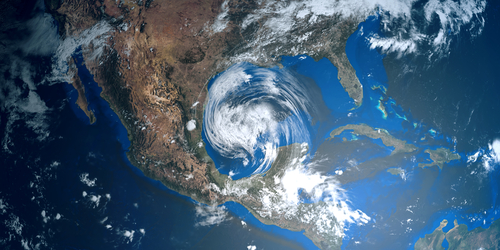A person preparing for a career in emergency management or disaster relief may wonder, “What is the difference between emergency management and disaster relief?” In general, most levels of government identify an emergency as an unforeseen but predictable event with a fairly narrow scope. A disaster is a wide-scale event that requires a larger response by multiple groups or entities.
Related resource: TOP 10 DOCTORATE DEGREES IN EMERGENCY MANAGEMENT ONLINE
What an Emergency Is
An emergency is a small-scale but serious problem. For example, a small release of hazardous materials, the flooding of a river or a train derailment involving spilled diesel fuel could constitute an emergency at a local or regional level. The situation would typically be handled by the first responders for the area. Those first responders would include the police, fire department and local chapter of the American Red Cross. A small number of people might experience injuries, and a small number of people might need evacuation on a short-term basis.
What the Management of an Emergency Entails
There are several phases of managing an emergency. Those include identifying the problem, determining who will handle each aspect of it and coordinating the cleanup, casualty care and restoration of the area. There is also a person or group to handle emergency communications, such as reverse-911 calls, emergency alert texts, or use of the local tornado sirens. In an emergency, most assistance is provided by the local or state level. For example, the American Red Cross might set up a temporary shelter in a high school gymnasium for 50 people whose homes were damaged in a tornado. Many people will rely on their property or business insurance to cover a majority of the losses they experience in an emergency.
What a Disaster Is
A disaster is typically a sudden-onset problem caused by nature or people, and it causes a widespread and deep disruption of social routines. A disaster typically involves large numbers of casualties, the displacement of large numbers of people from a wide geographic area and considerable property damage or loss. Some examples of a disaster include the landfall of Hurricane Katrina, Fukushima Daichi nuclear reactor melt-down and the terrorist attacks of September 11, 2001. In these events, there were large numbers of injured and deceased people, disruption of transportation and supply lines and large numbers of people who were displaced from their places of residence or work.
What Disaster Relief Involves
According to the Department of Homeland Security, federal disaster relief involves multiple agencies providing a wide range of assistance to individuals and businesses for an extended period of time. For example, individuals might apply for housing assistance, food assistance and medical assistance in the aftermath of a disaster. The Federal Emergency Management Agency may relocate more than 100,000 people out of the zone of impact and provide temporary shelter, food, and clothing. The federal agencies may coordinate with nonprofit groups, regional authorities, and businesses in order to provide people with their material needs, immediate medical care and medications. Disaster relief also involves loans for businesses so that they can rebuild and return to employing people.
People who work in emergency management and disaster relief should be adept at navigating different governmental programs and agencies. They should also be skilled at communicating and sympathetic to people who are in distress. Knowing the answer to, “What is the difference between emergency management and disaster relief?” could help a person make an informed decision about their career path.
